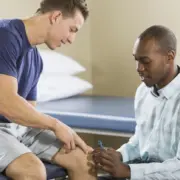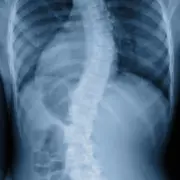5 Facts You Should Know About Low Back Pain
If you’re suffering from low back pain, you’re not alone. More than 80 percent of adults in the US will experience some kind of lower back pain in their life and it is the most common job-related disability. But knowing that misery loves company doesn’t relieve your pain. Only getting a proper diagnosis and treatment can do that. If you’re trying to figure out where to start with your lower back pain, these 4 facts can point you in the right direction:
#1 There are many causes of low back pain, from injury to disease
The majority of low back pain is caused by an injury, many from sports or occupational situations. But it can also be caused by disease. Arthritis, certain infections, cancers or diseases of the discs are all known to cause low back pain.
If you have low back pain and it does not resolve in a couple of weeks with home care remedies such as rest and ice, seek out an orthopedic specialist who can evaluate you and determine if tests such as x-rays, are needed to look for disc damage or indication of other diseases.
#2: Everyday changes can make a big difference
If your pain is caused by injury or overuse, pausing intense activities or swapping them for some strategic exercises (or both) can be key to recovery. Even those of us who are committed to a consistent fitness routine or have done the same activities for years still overdo it occasionally. Taking a short break or adjusting your form can work wonders for healing and reducing the chance or reinjury.
If your pain is aggravated by certain work activities, there may be small changes you can make to minimize further strain. If you’re on your feet all day or your job entails heavy lifting or other strenuous activities, you might benefit from better equipment (even changing to more study, supportive shoes can make an impact!), form or technique.
#3 Physical therapy and exercise can be a game changer
When homecare and lifestyle adjustments are not helping, your doctor may prescribe therapy under the guidance of a physical or occupational therapist. These experts can recommend exercises that are specifically designed for your situation. They may include stabilization or core strengthening exercises that help you regain strength and control over your abdominal muscles which are key in properly aligning and stabilizing the back and spine.
#4 Surgery for low back pain is typically only recommended when all other options have been exhausted
Even chronic pain can often be addressed with non-surgical, or minimally invasive treatments such as injections or physical therapy. But some problems, left untreated, can lead to significant and even permanent nerve damage and must be addressed. When surgery is recommended, it’s after non-surgical options are exhausted, and an orthopedic specialist feels that surgery gives a patient the best opportunity for a full and pain fee life.
#5 Many causes of low back pain can be prevented!
You’ve probably heard the phrase “an ounce of prevention is worth a pound of cure” and if you’ve endured low back pain, you know this is no exaggeration! Your lower back and spine are balanced by your core, which means your ab muscles are essential to keeping things in proper alignment. Strengthening those muscles and maintaining a healthy weight are two key ways to put less burden on your low back, and prevent injury.
Maintaining good posture at all times is also important. Make it easier on yourself and be mindful of how you sit, work and even stand – align your chair, desk, and computer so that you’re less likely to hunch over and put strain on your low back. If you stand for long periods of time during the day, wear comfortable, supportive and flat shoes to minimize or avoid low back pain.
If you have low back pain and haven’t been able to find relief, talk to an orthopedic spine specialist. They can diagnose the cause of your pain and outline a custom treatment plan that addresses your symptoms and related medical history.
Learn more about Dr. Crowther, our spine specialist, or make an appointment today.




